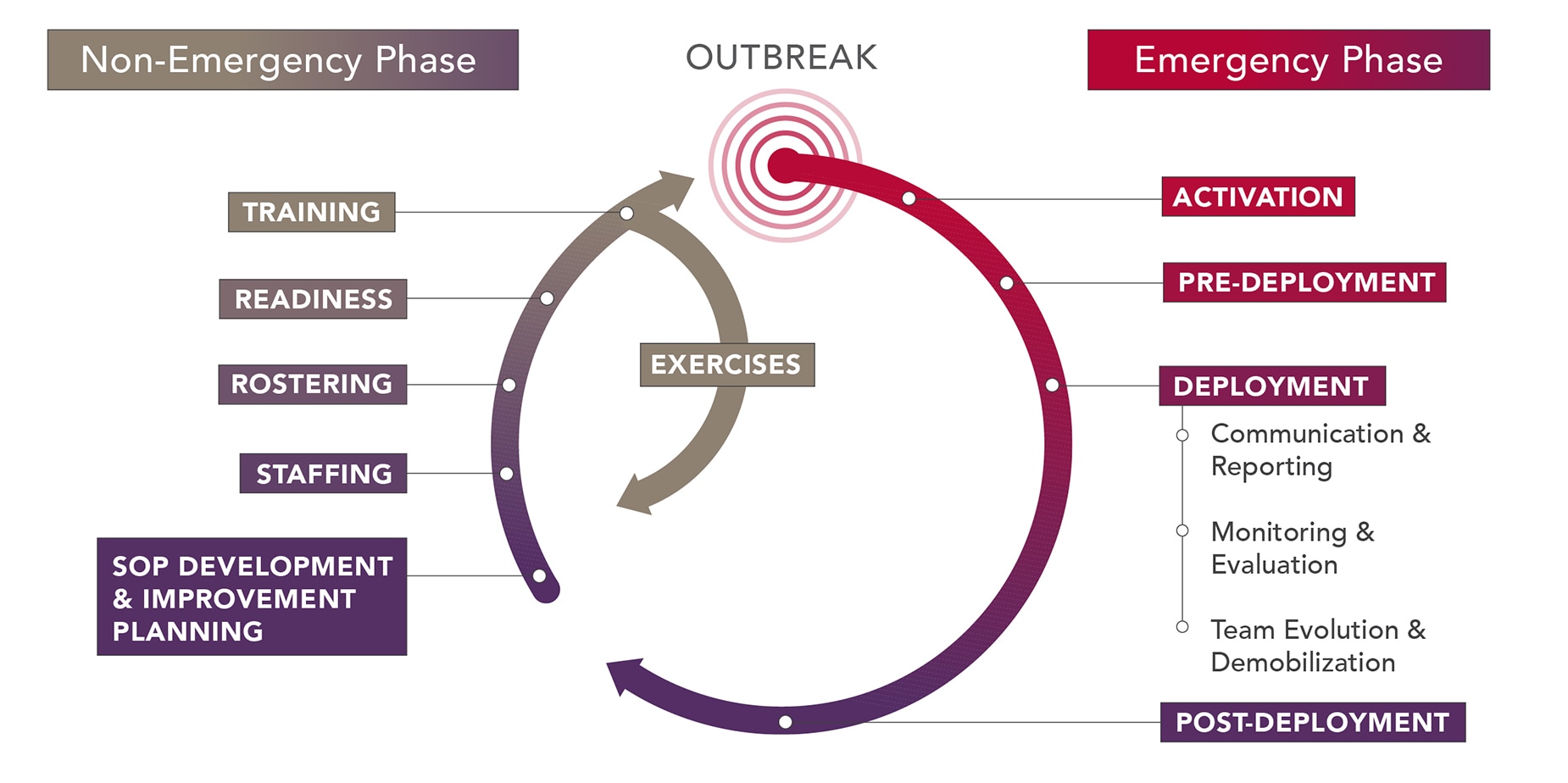Preparing Rapid Response Teams to Control Disease Outbreaks in the Democratic Republic of the Congo
May 3, 2021
Ensuring Global Health Security in the Wake of Ebola
When the 10th, and largest, Ebola outbreak in the Democratic Republic of the Congo (DRC) was declared over in June 2020, it was a welcome end to a familiar threat in the eastern part of the country. However, on February 7, 2021, DRC’s Minister of Health, Eteni Longondo, announced a new outbreak had been confirmed in North Kivu Province. Sequencing of samples suggests the cases were linked to cases in the area during the 2018–2020 outbreak.
Consistent planning, training, and skill building of public health leaders have helped the country to respond to Ebola outbreaks quickly and effectively. Since 2002, the U.S. Centers for Disease Control and Prevention (CDC) has closely collaborated with the country’s Ministry of Health (MOH) to reduce illness, disability, and death stemming from infectious diseases. Without the tireless work of DRC, CDC, and its partners over time, the outcomes of past outbreaks of Ebola, and other infectious diseases, could have been much more devastating.
CDC’s goals in DRC include making a positive impact on public health, improving health security, and creating sustainable health systems. To help meet these goals, CDC is supporting the MOH in building and training public health rapid response teams (RRTs) to strengthen emergency response capabilities. CDC is helping to establish a sustainable public health RRT program at the national and provincial levels that will allow for coordinated and effective public health emergency response across all of DRC — no matter the type of emergency. Reaching these goals is important for not only DRC’s citizens, but also for global health security, as Ebola and other dangerous diseases are a threat to all nations in today’s interconnected world.
Resilient with Public Health Rapid Response Teams
The International Health Regulations (2005)external icon highlight the need for countries to establish disease outbreak response capacity, including the ability to rapidly respond to any public health threat. Public health RRTs are teams made up of a variety of public health professionals, trained and ready to rapidly mobilize when there is a public health emergency.
Public health emergencies are best managed with a collaborative approach, making multidisciplinary public health RRTs essential to a country’s public health emergency response system. These RRTs can serve as a resource for non-emergency public health activities as well.
Rapid Response Team Emergency and Non-Emergency Phase Operations

CDC’s Division of Global Health Protection is developing public health RRT capacity in DRC with a phased, tiered approach where each component builds on the previous to create a sustainable program. After mapping rapid response capacity in DRC, CDC and International Medical Corps organized public health RRT management workshops for MOH executives and provincial public health workers in November 2020, January 2021, and April 2021. This series of workshops provided the framework for communities to stand ready and resilient in the face of disease outbreaks. Sharing concepts related to technical and managerial operations of public health RRTs during the non-emergency phase and emergency phase allows for a quicker and more effective response.
In addition to tailoring the curriculum to meet DRC’s needs, CDC’s Division of Global Health Protection transformed its existing public health RRT training for a virtual environment, given the ongoing COVID-19 pandemic.
Over 90 provincial health staff with diverse backgrounds were trained to develop and manage a public health RRT program so far, including medical doctors, hygienists, biologists, infection prevention and control experts, data managers, sanitation specialists, psychologists, environmental health specialists, and epidemiologists.
Participants learned how to:
- Identify critical activities for public health RRT management during non-emergency and emergency phases.
- Establish guidelines and standard operating procedures (SOPs) for effective rapid response to a public health emergency.
- Develop a system for identifying and creating a database of multidisciplinary public health RRT responders who are ready and trained to mobilize (i.e., roster development).
- Design a multidisciplinary training program for public health RRT responders.
Most importantly, participants grasped the importance of an established public health RRT program with a management team in place. A management team not only ensures public health RRT responders are trained and ready to deploy, but also serves as the backbone of the entire program during a fast-paced emergency response with competing priorities.
The Future of Public Health RRTs in DRC
Throughout 2021, CDC headquarters and the CDC DRC Country Office will continue to enhance the public health response capabilities of DRC’s MOH. CDC will help develop RRT SOPs and continue to build capacity in RRT managers and responders by facilitating trainings in North Kivu, Haut-Katanga, Equateur, Kinshasa, and Congo Central. These efforts will help DRC respond to multiple ongoing disease outbreaks of international concern nationwide, including Ebola and COVID-19. The trainings will help DRC effectively deploy and manage public health RRTs in the early phase of crises.
CDC’s continued support for national and provincial public health RRTs will help DRC meet its public health goals. CDC’s phased approach to training will help create a sustainable public health RRT program by developing a cadre of public health professionals ready to rapidly respond.
Phased Approach to Rapid Response Team Capacity
